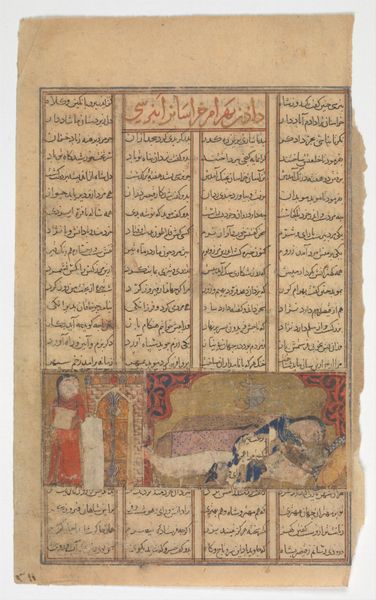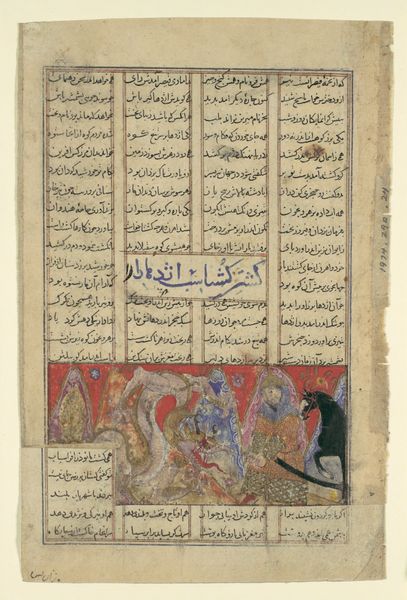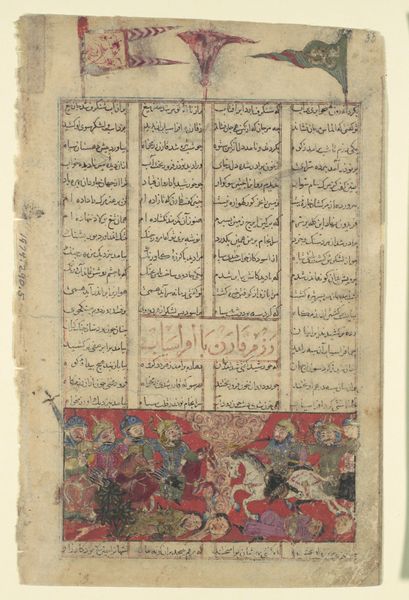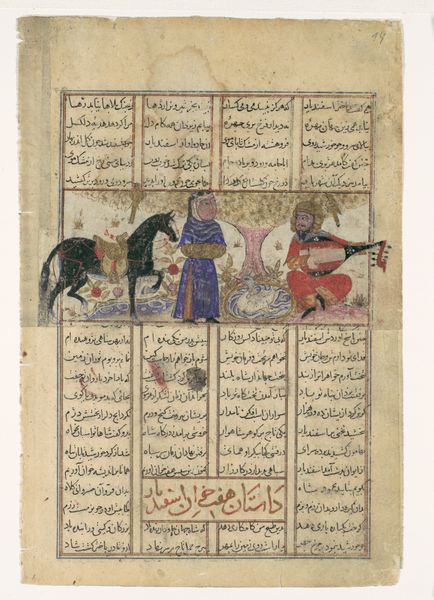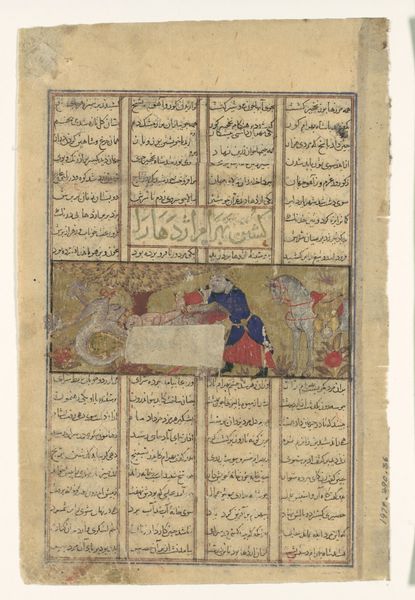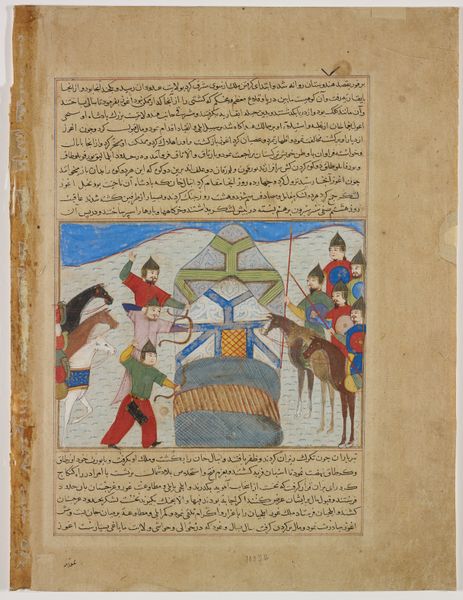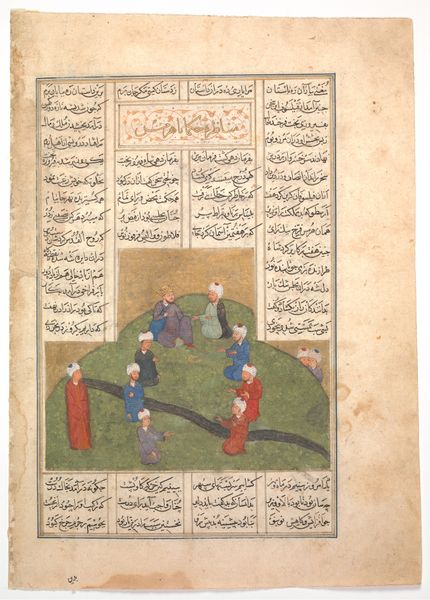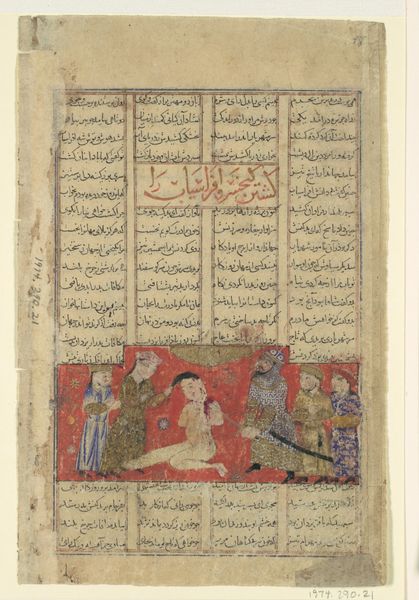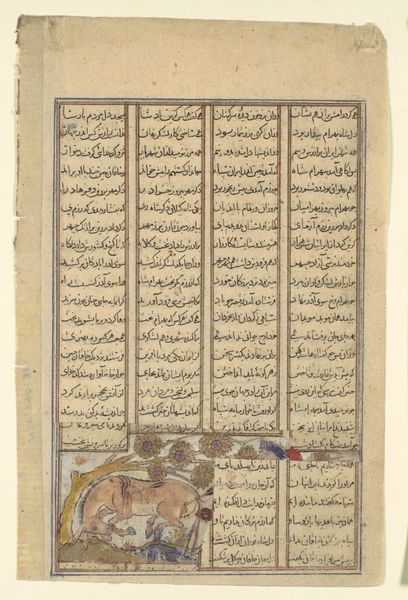
"Rustam Wrestles with Puladvand", Folio from a Shahnama 15th century
0:00
0:00
painting, watercolor
#
narrative-art
#
painting
#
figuration
#
watercolor
#
islamic-art
#
miniature
Dimensions: Frame: H. 16 3/8 in. (41.6 cm) W. 12 3/8 in. (31.4 cm) Mat Window (approx): H. 10 1/4 in. (26 cm) W. 6 3/4 in. (17.1 cm)
Copyright: Public Domain
Curator: Welcome. Today, we're looking at a striking page from a Shahnama, or Book of Kings, titled "Rustam Wrestles with Puladvand," likely created in the 15th century. Editor: My first thought is just how dynamic the composition is, the wrestling figures are so tightly interwoven, full of coiled power. Despite being rendered in such miniature scale, the emotion and muscular effort practically jump off the page. Curator: Exactly. It’s a remarkable example of the power of Persian miniature painting. The manuscript page itself would have been carefully prepared, perhaps with multiple layers of burnished paper to create a smooth, receptive surface for the watercolor paints and inks. Editor: The process itself speaks volumes. The initial sketches, the painstaking application of color, the burnishing – this isn’t just image-making; it’s an investment of intense labour and care. Notice how flat planes are set against others in contrasting ways. Curator: Absolutely, and the imagery serves a very specific purpose within the larger narrative of the Shahnama. Wrestling was more than sport, it symbolized the testing and proving of virtues central to kingship. Editor: And note the watchful presence of the figures in the background. This immediately speaks to ritual and to theater. The materiality serves to convey moral concepts and social orders of kings and fighters. I can see the text above, that could shed light as well. Curator: The calligraphic text panels do provide crucial narrative context. This wasn't simply about illustrating a story; it was about using the image and text together to impart wisdom and celebrate cultural memory. The enduring relevance of heroic archetypes of valor, struggle, and righteous victory. The symbolism reinforces a cyclical return to ancestral roots of glory and empire. Editor: And if we consider this folio within the broader context of manuscript production at the time, what does this labour reveal? I'm looking at that burnishing and those details, the production conditions would be interesting to discover. Curator: It reveals an intricate web of artistic collaboration and patronage networks that were pivotal in disseminating Persian culture. So many artists, scribes, and patrons helped put this book together. Editor: So, through examining a detail like the watercolor pigments and supports employed, as well as tracing back its production and consumption in the late medieval Middle East, this cultural artifact gains immense complexity and sophistication, don't you agree? Curator: Precisely. The painting serves not just as visual representation but a complex embodiment of faith and ethical codes that shaped the identities. Thank you, that’s a great place to end. Editor: Thank you. The image-text-patron confluence reveals just so much.
Comments
No comments
Be the first to comment and join the conversation on the ultimate creative platform.


